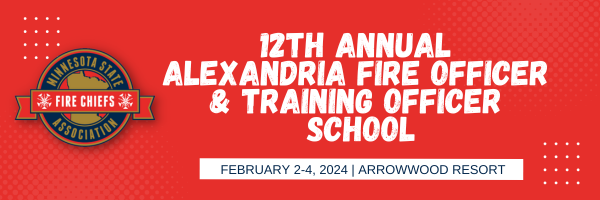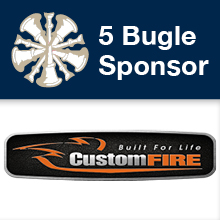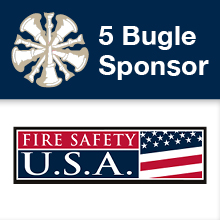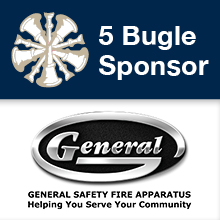|
2024 Alexandria Fire Officer & Training Officer School
February 2-4, 2024 | Arrowwood Resort | 2100 Arrowwood Ln NW, Alexandria, MN 56308
Attendees can register for one (1) 12-hour class, which is held on Saturday and Sunday. Please see descriptions below:
Accountability in Leadership
Greg Hayes
As a leader in today's environment, we are met with many challenges in dealing with programs, people, and politics. Leadership tactics have evolved from the traditional approaches from which we will need to evolve. Within this course, you will dive into the challenges you are facing today. Discussions and exercises will help you talk through some of the complex issues facing today’s leaders in Public Safety. Finally, utilizing real-world examples, you will identify key strategies to help you lead your organization.
Buddy to Boss
BJ Jungmann, Fire Chief, Burnsville & Chad Weinstein
The transition from firefighter to company officer is more complicated that merely transitioning “from buddy to boss.” Front-line officers work side-by-side with those they lead, in close quarters in the firehouse and in the hot zone. This program will engage current and prospective officers in discussions, exercises, and presentations designed to help them become the best leaders they can be. The goal is to cultivate an understanding what it takes to be a successful and impactful company officer. Participants will learn leadership skills and concepts while working with peers from around the state in order to apply them to the real world of front-line supervision and mentorship.
Critical Thinking for Fire Ground Operations
Lance Ross, MN-1 AHIMT & Trevor Hamdorf, Deputy Director - Public Safety, New Brighton
Each and everyday Emergency Services respond to numerous calls that require different approaches to best control the situation. Often, the decisions of controlling that situation happen within seconds. Some of these situations end up going longer than the “normal” call.
This critical thinking session is designed to provide you a background and enhance your decision making on a scene both initially and long term incidents. Learn from case studies and lessons learned on the ICS City a 5 ft. x 32 ft. training city that you will be utilizing during the session. The session scenarios will start at a baseline level and grow in intensity and complexity. The ICS City allows for students to utilize the concepts learned during class and their “real world” experience and apply to the exercise that is unfolding in front of them “in the city”.
The session will have training components and many “hands on” opportunities with the ICS City.
Fire Ground Management - First Arriving Officer
Dale Specken, Fire Chief, Hopkins
Curt Mackey, Fire Chief, Excelsior
Participants will learn the importance of conducting a thorough size-up before committing limited resources. This course will develop company officers’ incident scene supervisory and management capabilities in structural fire operations. Key content includes discussion and scenario-based practice on controlling and implementing the activities that need to be done to successfully deal with personnel performing the following operations; rescue and ventilation, confinement and extinguishment, water supply, exposures, offensive and defensive operations, salvage, overhaul and support. This course takes a practical, common sense approach to fighting fires in single-family homes, multi-family apartment buildings, light industrial and commercial structures. It takes into account the realities of today's fire service–that is, most fire departments in this country are, understaffed, less experienced and involved in more EMS than ever before. If your incidents seem to run themselves and you’re not in control, then this course is for you.
Train-the-Trainer - The Value of Engagement
Scott Nelson
Engagement is a very important and effective element of your training program. The content experts who are currently training within your department can take their trainings to the next level by adding the presentation skills necessary to increase retention. Learning how to train with a high level of leadership command presence is the key to delivering a strong interactive training. The most engaging trainers understand the importance of having a structure that allows for intentionally placed participation and discussion that leave the firefighters feeling empowered and confident. Engaged learners participate actively in training and do it willingly with significantly increased retention.
Wildland Urban Interface for the Structural Company Officer
Brian Pisarek & Hunter Bell
As a responder in a WUI incident, the company officer may be placed in one of many roles, such as incident commander (IC), operations section chief (OSC) or taskforce leader or one of many support roles.
This course identifies the operational activities and safety considerations for the structural officer assigned to a wildland urban interface incident (WUI). This course assumes the student has basic knowledge of wildland firefighting and will reinforce and expands that Knowledge to include WUI.
Topics includes history of the WUI incidents, the intricacies of the WUI, the interface environment, fire behavior, command issues, safety and the related strategic and tactical options that compare and contrast with structural firefighting.
Session will be led by Brian Pisarek – 42-year wildland firefighter with the MNDNR. Brian has lead incident management teams with in the urban interface environment. He has served in many capacities on a national type 2 team holding position such as incident command type 2, Operations section chief and structural specialist. One of the local incidents includes Incident Commander of the Green Wood fire in northern Minnesota fall of 2022.
Also leading in the delivery of the course is Hunter Bell of Ely MN. Hunter Bell is a Structure Protection Specialist (STPS) with Northern Rockies Incident Management Team 1, a Type 1 Complex Incident Management Team based in Region 1. Furthermore, he is an alternate STPS with the Eastern Area Incident Management Team, Type 2, and with the MNICS Type 3 Teams. He has a background in structure and wildland fire, emergency medicine as well as in building construction. He has worked at the local government level as a volunteer/volunteer Fire Chief, AEMT, emergency fire fighter (EFF) with Montana DNRC, a crew member with Lewis & Clark Interagency Hot Shots out of Great Falls, MT, as a single resource with the BLM (AD) out of Billings, MT, and currently a single resource with the USFS (AD) out of R9/Ely, MN. He is also the author and publisher of a guide for Operations in the Wildland Urban Interface.
|







